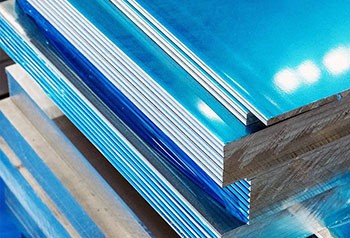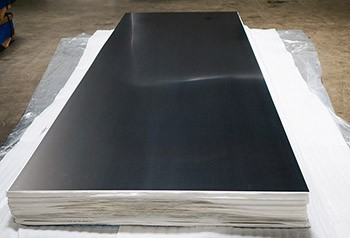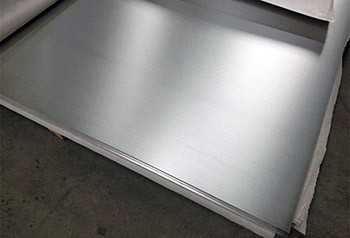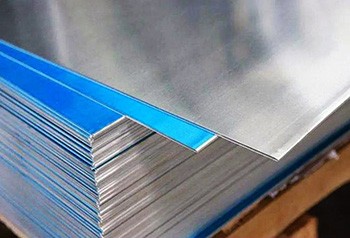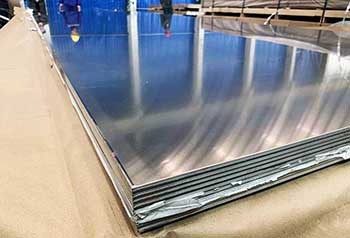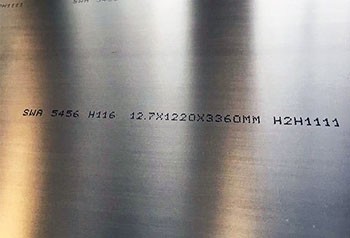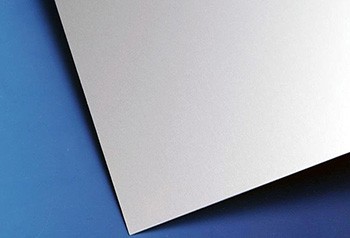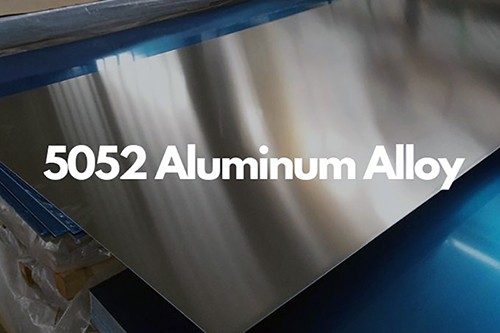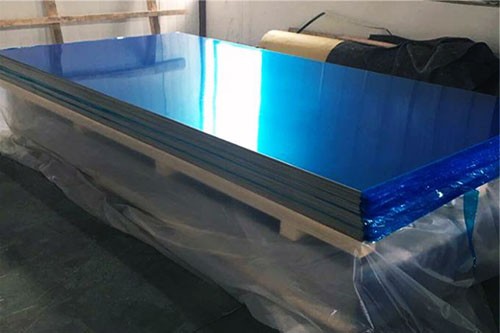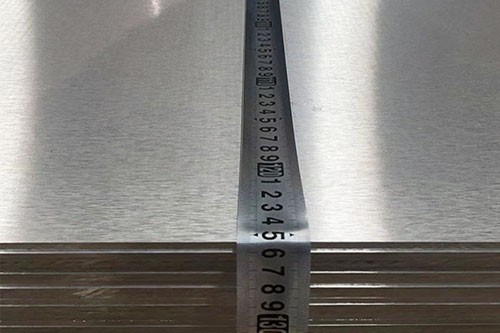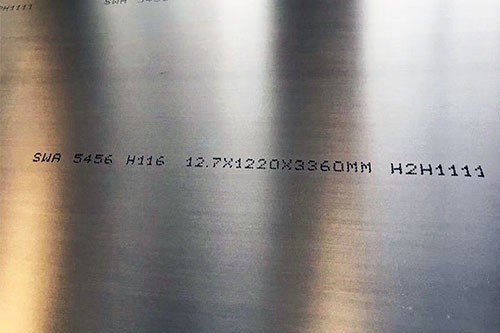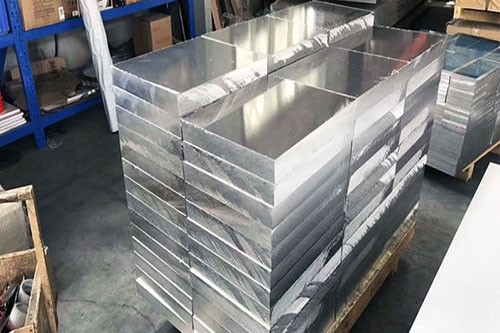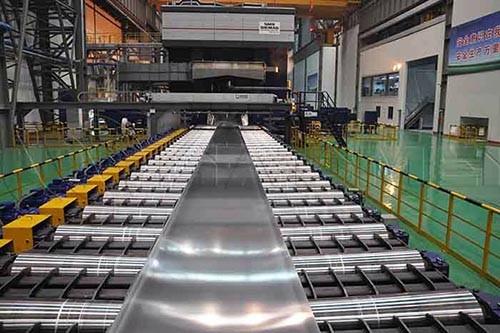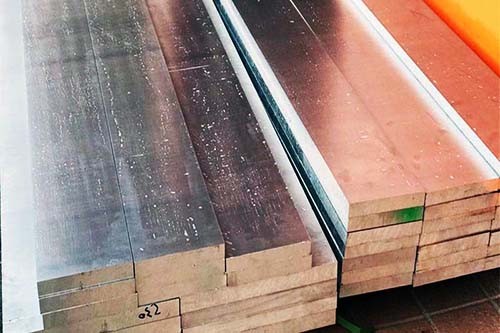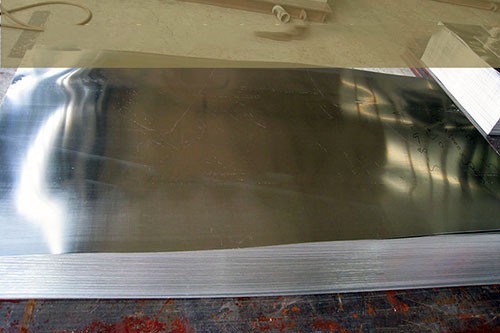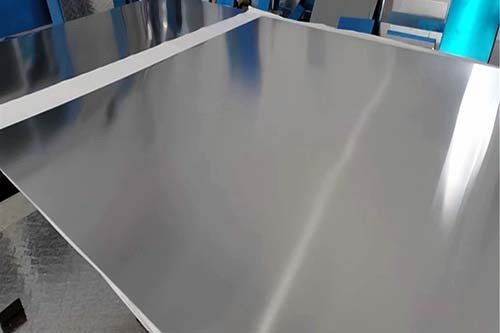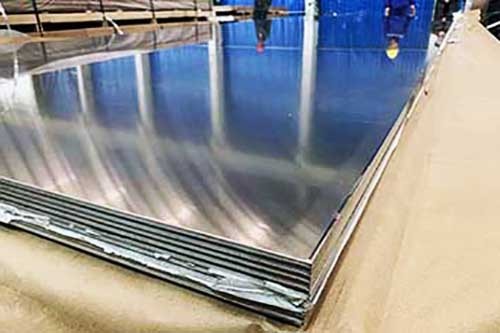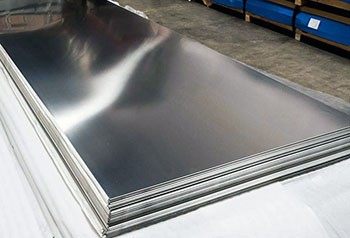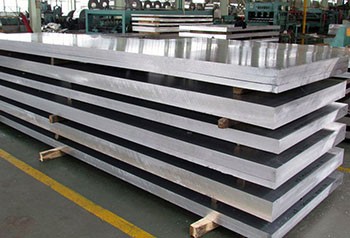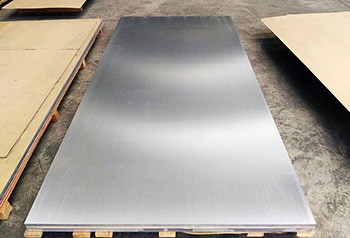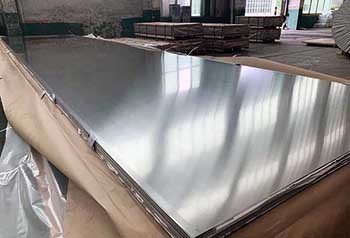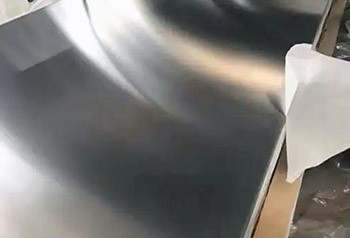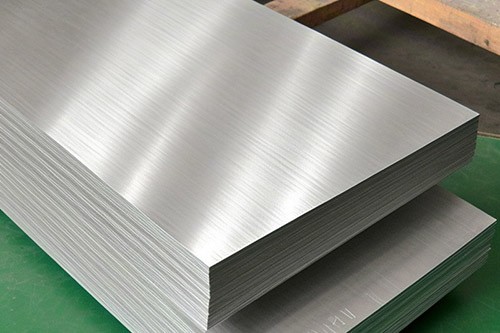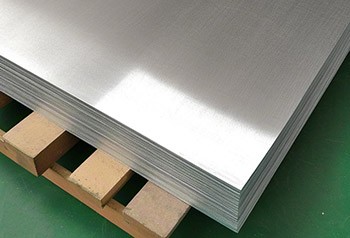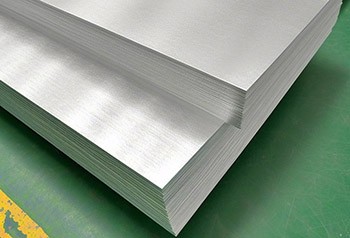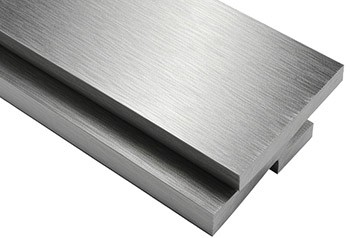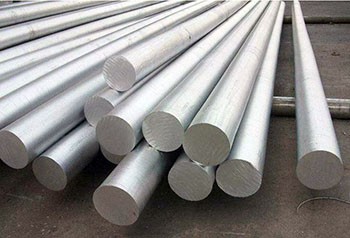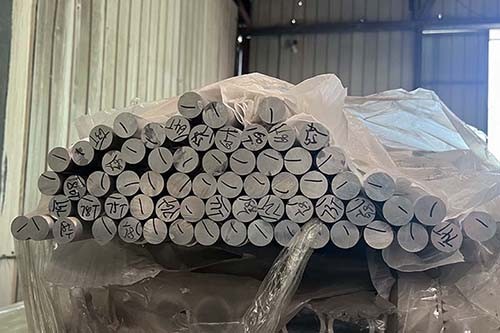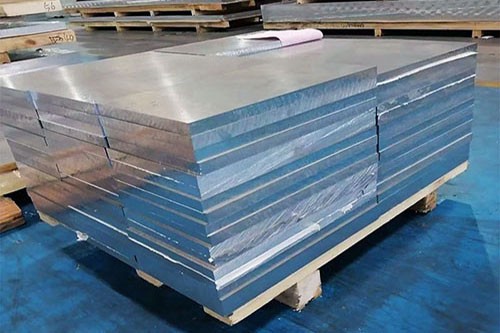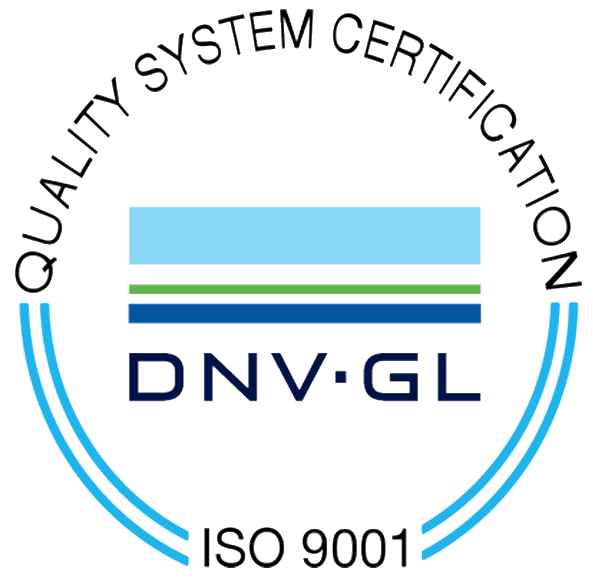5456 H321 Aluminum
5456-H321 aluminum is a type of 5000 series wrought aluminum alloy, primarily alloyed with magnesium and not strengthened through heat treatment. Instead, its mechanical strength is enhanced through cold working (strain hardening) followed by a stabilization process. In the H321 temper, the hardness of the alloy is approximately one-quarter of the hardness between the fully annealed (O) and fully hardened (H38) states. This treatment provides a balanced combination of high strength, moderate ductility, and excellent corrosion resistance, particularly against intergranular and exfoliation corrosion.
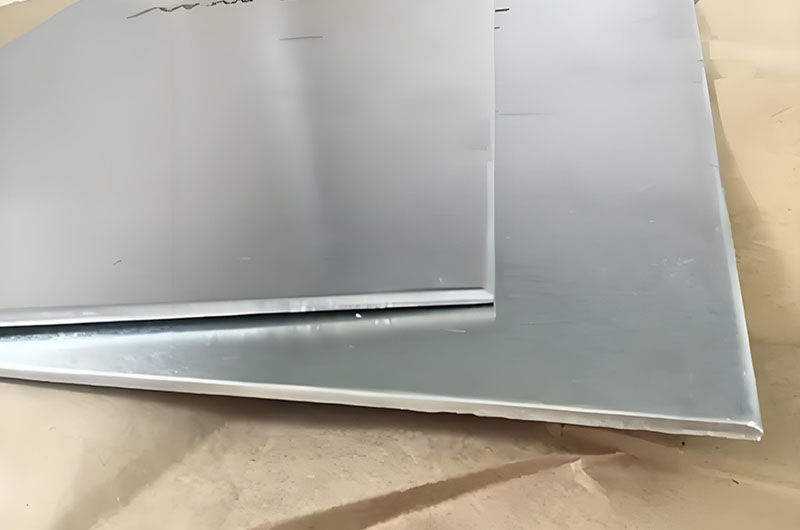
5456 H321 aluminum is optimized for marine and structural applications. The "H321" temper indicates that it has undergone strain hardening followed by a stabilization process to enhance its mechanical properties while maintaining corrosion resistance. This treatment gives it a strength level that is about one-quarter of the way between the annealed (O) and fully hardened (H38) states, balancing formability and durability.
5456 H321 aluminum alloy is a high-strength aluminum alloy primarily used in the marine and shipbuilding industries, especially for corrosion-resistant structures in seawater environments. Its high strength and excellent corrosion resistance make it an ideal material for components that need to bear large loads or be exposed to seawater for extended periods. The H321 temper indicates that the alloy has undergone a certain degree of strain hardening and heat treatment to improve its mechanical properties and stability.
H321 Temper 5456 Aluminum Features
- Heat Treatment Process: The H321 temper is achieved by strain hardening followed by a stabilization treatment to stabilize the alloy at a specific temperature. The goal of this process is to enhance the alloy's strength while ensuring a certain level of corrosion resistance. Compared to T-series tempers (such as T6), the strength of H321 is slightly lower, but its corrosion resistance and formability are better.
- Strength and Hardness: In the H321 temper, 5456 aluminum alloy has moderate strength, with its strength value lying between the annealed state (O) and the full hard state (H38), roughly one-quarter of the way. Although its strength is not as high as T-series alloys, it is still sufficient to meet the demands of structural components in most marine environments.
- Corrosion Resistance: This alloy has excellent corrosion resistance, particularly to seawater and marine environments. Due to its chemical composition, 5456 aluminum alloy can effectively resist intergranular corrosion and exfoliation corrosion when exposed to seawater or humid environments for extended periods.
- Formability and Weldability: 5456 aluminum alloy in the H321 temper retains good formability and weldability while maintaining a relatively high strength. This makes it highly suitable for the fabrication of complex ship structures and marine platform components.
5456 H321 Aluminum Standards and Certifications
- ASTM B928: Marine-grade sheet/plate specifications.
- ASTM B209: General sheet/plate standards.
- Aerospace: Compliant with standards such as QQ-A-250/9 and AMS 4344.
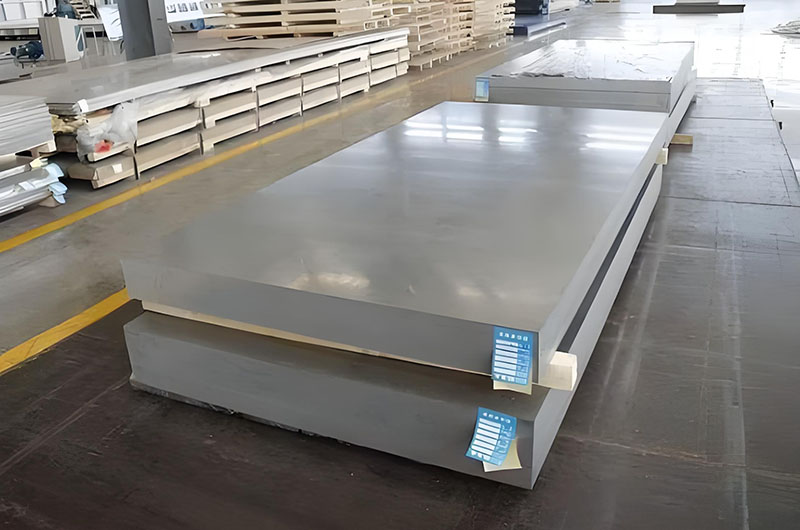
5456 H321 Aluminum Corrosion Resistance
- Excellent resistance to seawater, intergranular corrosion, and exfoliation corrosion, making it an ideal choice for marine environments.
- Limitation: When exposed to temperatures above 65°C (150°F) for extended periods, it may be susceptible to exfoliation corrosion.
5456 H321 Aluminum Performance Features
- Strength: In the H321 temper, 5456 aluminum alloy has moderate strength, making it suitable for structural components that need to bear certain loads. Its strength is not as high as T6 or other hard tempers, but it provides superior corrosion resistance in seawater environments.
- Corrosion Resistance: It has excellent corrosion resistance to seawater environments, making it ideal for long-term use in components exposed to seawater or marine environments. This makes it widely used in ships and marine platforms.
- Good Formability: Although the strength is moderate, the H321 temper alloy still offers good formability, allowing it to be easily shaped into various structural components without compromising its strength or corrosion resistance.
- Good Weldability: 5456 aluminum alloy in the H321 temper retains excellent weldability and can be processed using conventional welding methods, such as TIG (Tungsten Inert Gas) welding.
5456 H321 Aluminum Applications
Due to its excellent strength and corrosion resistance, 5456 H321 aluminum alloy is primarily used in shipbuilding, marine engineering, offshore platforms, and other marine facilities.
5456-H321 aluminum is widely used in marine environments, particularly in applications exposed to seawater, making it an ideal choice for hulls, bottom structures, offshore platforms, and components in contact with seawater.
- Ship Hulls and Bottom Structures: The H321 temper 5456 aluminum alloy is very suitable for use in ship hulls, bottom structures, and components directly exposed to seawater, such as hulls and bottom plates. These parts must withstand significant water pressure and prolonged exposure to seawater, requiring high strength and corrosion resistance.
- Offshore Platforms and Other Marine Facilities: For structural components of offshore platforms, floating structures, and other marine facilities, 5456 H321 aluminum alloy provides sufficient strength to withstand the pressures of offshore waves while resisting corrosion from seawater.
- Components in Direct Contact with Seawater: Due to its excellent corrosion resistance, H321 temper 5456 aluminum alloy is suitable for components frequently exposed to seawater in ships and marine platforms, such as water tanks, oil tanks, and seawater pipelines.
- Corrosion-Resistant Structural Components: Structural components that are exposed to marine environments for extended periods, such as seawater pumps, sunken hatch covers, and subsea cable protection tubes, often use this material to ensure its corrosion resistance.
5456 Marine Grade Aluminum Plate Sheet Chemical Composition
| Alloy | 5456 | |
| Si | ≦0.25 | |
| Fe | ≦0.4 | |
| Cu | ≦0.1 | |
| Mn | 0.50-1.0 | |
| Mg | 4.70-5.50 | |
| Cr | 0.05-0.20 | |
| Zn | ≦0.25 | |
| Ti | ≦0.2 | |
| Zr | - | |
| Standard | EN573 | ASTM B928 |
5456 H321 Aluminum Mechanical Properties
| Property | 5456-H321 Aluminum |
| Brinell Hardness | 90 |
| Elastic (Young's, Tensile) Modulus | 9.9 x 10^6 psi |
| Elongation at Break (%) | 14 |
| Fatigue Strength | 31 x 10^3 psi |
| Poisson's Ratio | 0.33 |
| Shear Modulus | 3.7 x 10^6 psi |
| Shear Strength | 30 x 10^3 psi |
| Tensile Strength: Ultimate (UTS) | 50 x 10^3 psi |
| Tensile Strength: Yield (Proof) | 37 x 10^3 psi |
5456 H321 Aluminum Thermal Properties
| Property | 5456-H321 Aluminum |
| Latent Heat of Fusion | 390 J/g |
| Maximum Temperature: Mechanical | 370°F |
| Melting Completion (Liquidus) | 1180°F |
| Melting Onset (Solidus) | 1060°F |
| Specific Heat Capacity | 0.22 BTU/lb-°F |
| Thermal Conductivity | 68 BTU/h-ft-°F |
| Thermal Expansion | 24 µm/m-K |
5456 H321 Aluminum Electrical Properties
| Property | 5456-H321 Aluminum |
| Electrical Conductivity: Equal Volume | 29% IACS |
| Electrical Conductivity: Equal Weight | 97% IACS |
Comparison of 5456 H321 Aluminum with Other Tempers
- H321 vs. H32: Similar corrosion resistance, but H321 provides higher stability through controlled heat treatment.
- H321 vs. T6: Lower strength than T6, but superior weldability and corrosion resistance.
Comparison with H32 Temper: The 5456 aluminum alloy in H321 temper is similar to the H32 temper in that both offer high corrosion resistance. However, the H321 temper undergoes stricter control during heat treatment to ensure greater stability. The H32 temper is typically used in applications that require some strength but not extreme strength, while H321 is often used in applications that need to withstand larger loads or be exposed to more extreme environments.
Comparison with T6 Temper: Compared to the T6 temper (such as 5456 T6), the strength of H321 is lower, but it offers superior corrosion resistance and weldability. T6 temper alloys are more common in structural components that require high strength, but they do not provide the same level of corrosion resistance as H321.
5456 H321 aluminum alloy is widely used in marine environments, particularly in structural components for ships and offshore platforms. Through strain hardening and heat treatment, the alloy ensures excellent mechanical properties while providing outstanding resistance to seawater corrosion. While its strength is slightly lower than T-series aluminum alloys, its excellent corrosion resistance, good weldability, and formability make it a key material choice in the marine and shipbuilding industries.
5456 H321 Aluminum Processing Considerations
- Formability: Despite strain hardening, it retains good cold forming capabilities.
- Welding: Compatible with TIG and MIG methods, but post-weld heat treatment may be necessary for critical applications.
- Machining: Requires sharp tools to prevent galling due to its magnesium content.
5456-H321 aluminum is an excellent choice for applications that require a lightweight yet strong material with reliable corrosion resistance and good formability, making it suitable for structural components in pressure vessels, aerospace, and marine industries.
Marine aluminum products you may be interested in
-
5052 Marine Grade Aluminum Plate Sheet
In seawater environments, 5052 aluminum alloy has corrosion resistance properties that are unmatched by many other materials.
-
5083 Marine Grade Aluminum Plate Sheet
5083 marine grade aluminum is an aluminum alloy specifically designed for use in marine environments. It is known for its excellent corrosion resistance and high strength, making it ideal for applications such as shipbuilding, hulls, offshore structures and other marine components.
-
5059 Marine Grade Aluminum Plate Sheet
5059 marine-grade aluminum offers many benefits to the shipbuilding industry, including reduced weight, increased load capacity, improved stability and speed, corrosion resistance and versatility.
-
5086 Marine Grade Aluminum Plate Sheet
Marine-grade aluminum alloy 5086 combines corrosion resistance, rust resistance, strength, weldability, formability and resistance to environmental factors, making it ideal for underwater components of ship hulls and other marine applications.
-
5383 Marine Grade Aluminum Plate Sheet
5383 marine grade aluminum plate has excellent corrosion resistance and high strength. Aluminum alloy 5383 is commonly used in shipbuilding and other maritime structures where durability and resistance to salt water corrosion are critical.
-
5456 Marine Grade Aluminum Plate Sheet
5456 marine grade aluminum plate is an economical choice for ship construction. Can be used on baseboards, decks and other upper fittings.
-
5754 Marine Grade Aluminum Plate Sheet
5754 marine grade aluminum plate is an aluminum alloy designed specifically for marine applications with excellent corrosion resistance and high strength.
-
The 5052 O aluminum plate has excellent formability, making it suitable for the complex curved structures and cold-formed components of ship hulls.
-
5456-H111 aluminum alloy is commonly used in the marine and shipbuilding industries, particularly in environments that require resistance to seawater corrosion.
-
5456-H112 aluminum alloy is a cold-processed and heat-treated aluminum alloy, primarily used in fields that require high corrosion resistance and moderate strength, such as the marine and shipbuilding industries.
-
5456 aluminum alloy is a high-strength aluminum alloy widely used in marine, shipbuilding, offshore engineering, and other corrosion-resistant structural components.
-
5456 H32 aluminum alloy is widely used in the marine and shipbuilding industries. It has good corrosion resistance and is suitable for anti-corrosion structural components in seawater environments.
-
5456 O aluminum alloy is a state of the 5456 series, referring to the aluminum alloy that has been fully annealed (O state).
-
5383 H112 aluminum is a corrosion-resistant, medium-strength alloy with excellent formability, making it ideal for marine applications. It is also cost-effective for structural components exposed to harsh environments.
-
5383-H321 aluminum has high strength and excellent corrosion resistance, making it suitable for high-load marine applications, especially in environments that require resistance to intergranular corrosion and exfoliation corrosion.
-
5383-H116 aluminum offers good corrosion resistance through specific heat treatment and cold working, making it suitable for light-load marine applications, especially for long-term use in seawater environments.
-
5383 H34 aluminum alloy is a high-strength aluminum alloy that has undergone strain hardening and stabilization treatments, offering excellent corrosion resistance and weldability. It is widely used in marine, transportation, and construction fields.
-
5383-H32 Aluminum is an aluminum alloy that has undergone strain hardening and stabilization treatment, belonging to the aluminum-magnesium alloy series. The "H32" temper indicates that the alloy has been strain-hardened through cold working and then stabilized by appropriate heat treatment, with strength lying between the annealed (O) and full-hard (H38) states.
-
5383-H111 aluminum alloy is a type of aluminum alloy, which undergoes specific heat treatment and mechanical processing to be in the H111 condition. This alloy is widely used in environments that require good corrosion resistance and moderate strength.
-
5383-O aluminum alloy is the annealed (O condition) version of 5383 aluminum. It belongs to the aluminum-magnesium alloy series and has excellent corrosion resistance, particularly outstanding in marine environments.
-
5059 H116 aluminum alloy is suitable for applications that need to withstand high stresses, long-term fatigue and highly corrosive environments.
-
5059 H111 is a condition of 5059 aluminum alloy, where "H111" indicates that it has undergone certain processing techniques to achieve a strength level lower than the H11 condition, typically through strain hardening and cold working.
-
5059-H321 aluminum alloy is the version of 5059 aluminum alloy in the H321 condition, which has undergone strain hardening and stabilization treatment.
-
As a trusted aluminum plate manufacturer, we specialize in producing high-quality 5083 H321 aluminum plates suitable for marine, transportation, and industrial applications.
-
Our company offers 5083-H116 aluminum plates certified by classification societies (CCS/BV/DNV), featuring excellent corrosion resistance, weldability, and medium strength. They are widely used in ship decks, hull outer plates, LNG storage tanks, and other fields.
-
5083-H111 aluminum is a non-heat-treatable strain-hardened aluminum-magnesium alloy, known for its exceptional corrosion resistance in marine and industrial environments and its ability to maintain high strength even after welding.
-
With 20 years of experience in marine-grade aluminum production, our products are all certified by classification societies (such as CCS, DNV, etc.), and we offer customized solutions upon request.
-
5456 5454 5754 Marine Grade Aluminum Bar
5456 5454 5754 Marine Grade Aluminum Bar has certification from CCS, DNV, NK, CCS, ABS, BV, LR, KR and other classification societies, and its quality fully complies with world marine grade standards.
-
Marine Grade Aluminum Round Bar 5754 5454 5456
The quality of 5754, 5456, and 5454 marine-grade aluminum round bars fully meets the ship classification standards worldwide: CCS, DNV, NK, ABS, BV, LR, KR.
-
5456 H321 aluminum alloy is a high-strength aluminum alloy primarily used in the marine and shipbuilding industries, especially for corrosion-resistant structures in seawater environments.

